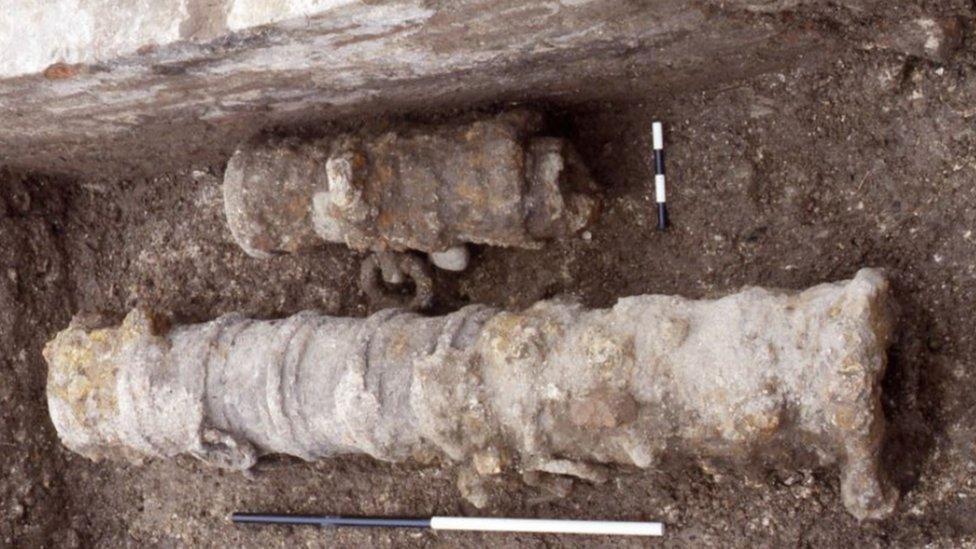Hull's Henry VIII blockhouse dig 'bit of a gem'
- Published
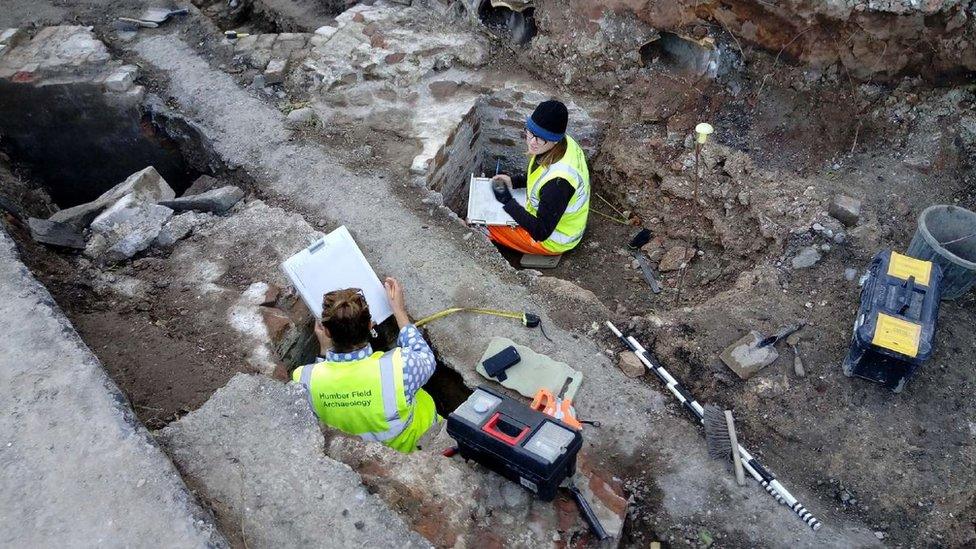
A team of six archaeologists worked alongside volunteers on the dig
A dig at a 16th Century blockhouse commissioned by Henry VIII for the city of Hull's defences has uncovered the original floor levels from the 1540s.
Ken Steedman, of Humber Field Archaeology (HFA), said the autumn excavation had "worked out very well".
Fragments of reused monastic material taken from the king's dissolution of the monasteries were also found in some walls, he said.
The port's defences were demolished in 1864 but not completely destroyed.
More stories from East Yorkshire
The blockhouse was commissioned by the king in 1541 to house guns and to protect the gunners and ammunition from attack.
It was part of a system of three forts linked by a curtain wall protecting Hull and its port.
The Citadel incorporated the South Blockhouse in the 1680s and left substantial remains below ground after it was demolished.
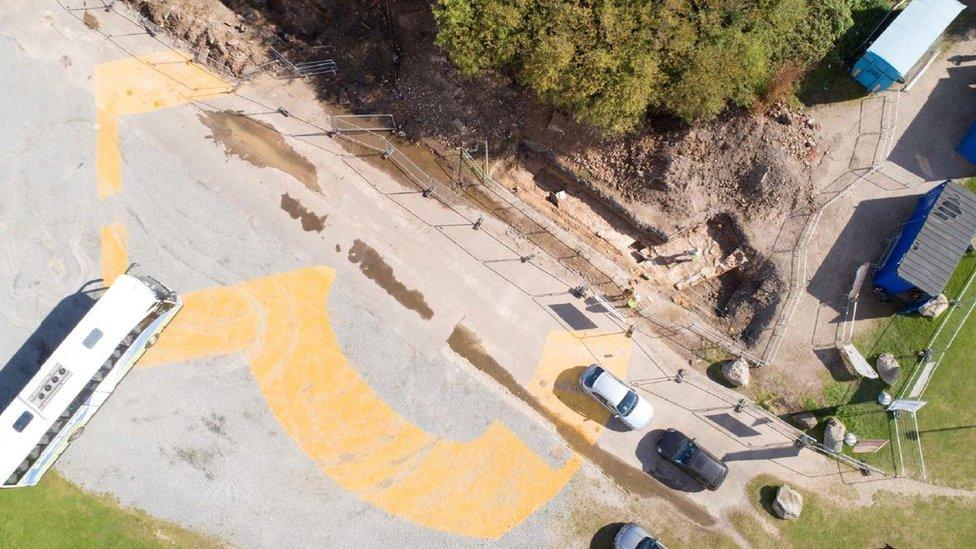
The site is now a coach park on which the outline of the blockhouse was marked
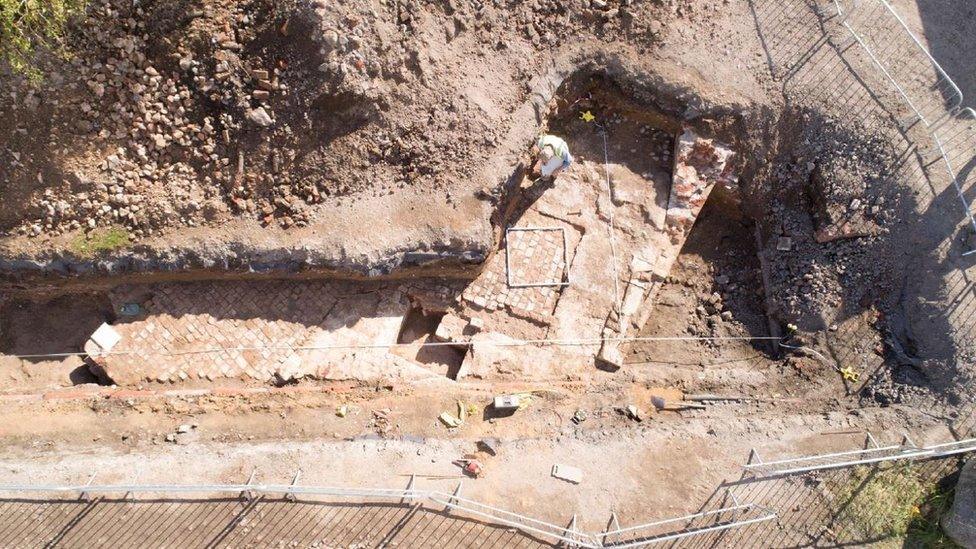
Walls and original floors from the 1540s were uncovered
Mr Steedman said it had been a "very good" dig.
Intact gun ports with side chambers were uncovered and the original 1541-43 floor level was found a few feet below the modern surface.
Preservation was improved because in the 19th Century material from blockhouse modification was dumped on to the floor to raise it and this had sealed in the archaeology, Mr Steedman said.
The dig also found that walls 3ft (1m) high had survived underground in places.
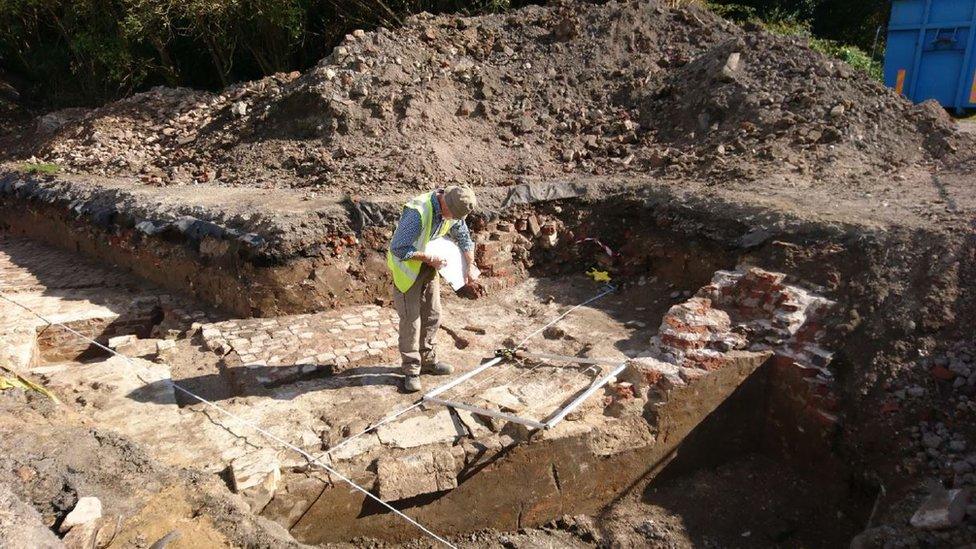
The dig had an area of 1,000 square feet (90 square metres)
"It proved that what we have is a bit of a gem," Mr Steedman said.
The results of the month-long dig in September are being collated and could lead to a funding bid to turn the site into a tourist attraction, although it was the "early stages", he added.
The excavations are part of Historic England's Hull Old Town Heritage Action Zone exploring the South Blockhouse's potential as an attraction.
The Old Town is Hull's historical centre, which has been inhabited for more than 700 years and contains 40% of Hull's listed buildings, said Historic England.

South Blockhouse
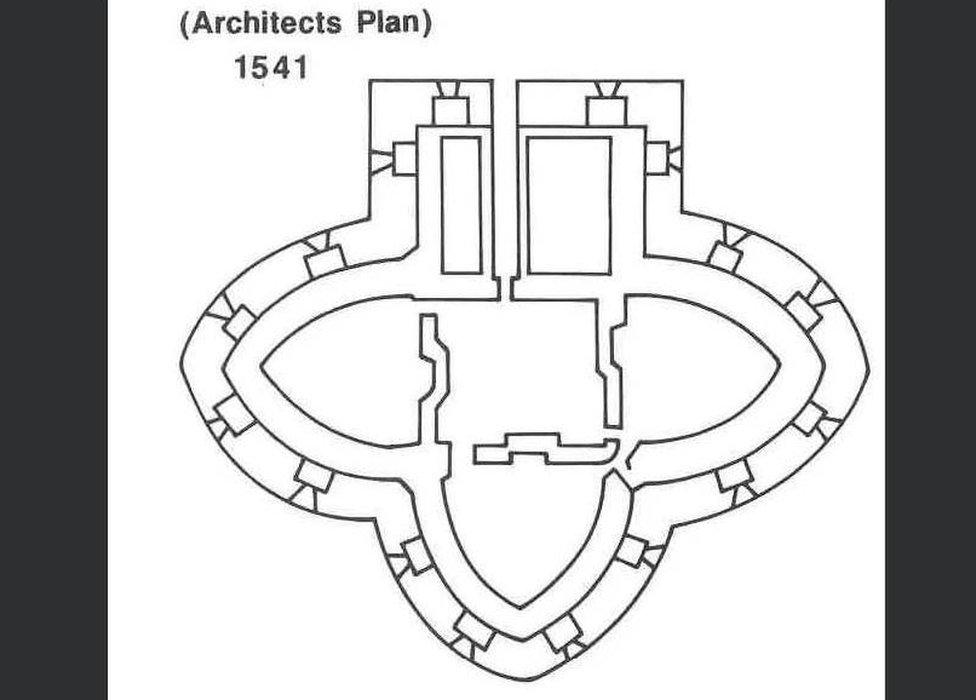
The scheduled monument includes remains of the earliest defences, external built by Henry VIII, and some later defences.
In February 1542:
Sixty bricklayers were working on the construction
There were also 20 masons, 20 carpenters and 10 plumbers working
About 300 labourers joined 30 lime burners and 30 brick makers supplying materials
The cost of building the fortifications was £23,000 (1543)
Source: HFA
The dissolution of the monasteries
King Henry VIII took over 800 monasteries, abbeys, nunneries and friaries, between 1536 and 1540. Many were sold off to landowners, others were taken over and became churches but many were left to ruin.
Source: British Library
- Published30 August 2017
